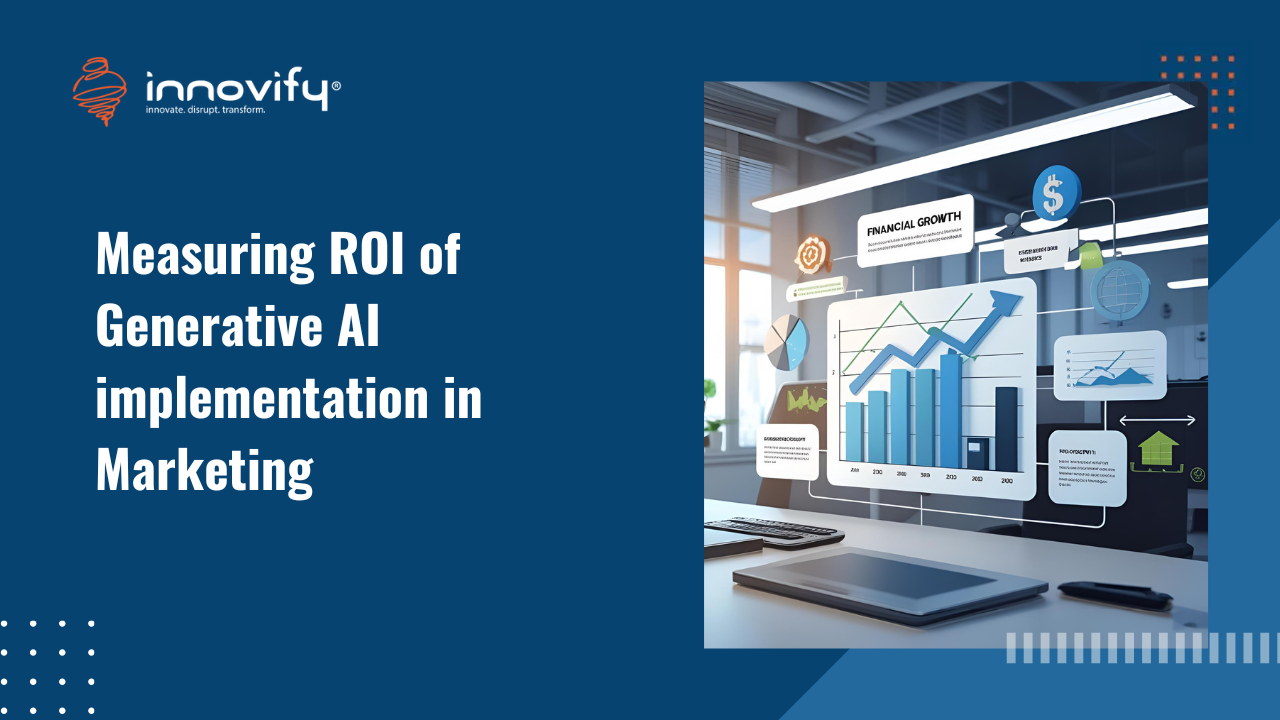AI/ML
Cloud and DevOps – Fuel for Digital Transformation in 2023
DevOps and Cloud Are Fueling Digital Transformation in 2023
Digital transformation has become a buzzword as organizations strive to keep up with the fast-paced and ever-evolving technological landscape. This shift towards digitalization has made it imperative for companies to adopt new technologies, processes, and ways of working to remain competitive.
The two innovative approaches that have gained significant traction in recent years and are helping organizations to achieve their digital transformation goals are DevOps and Cloud.
In fact:
- Gartner says that in key markets, more than half of enterprise information technology spending will shift to Cloud by 2025.
- Garter also predicts that 85% of companies will be cloud-first by 2025.
- And about 83% of the IT decision-makers confirm that they’re using DevOps.
So, let’s first discuss Cloud as it’s the backbone of modern technology infrastructure, even for DevOps.
What Do You Understand with Cloud Computing?
Cloud computing refers to the availability of computing services, such as servers, storage, databases, networking, software, analytics, and intelligence, over the internet (“the cloud”) to offer faster innovation, flexible infrastructure resources, and economies of scale.
Cloud computing has revolutionized the way enterprises store, manage, and process their data. It provides on-demand access to shared pools of configurable computing resources, such as servers, storage, and applications, over the internet.
Amazon Web Services is among the most popular cloud service providers, offering a wide range of cloud services, including IaaS, PaaS, and SaaS. Companies such as Netflix, Airbnb, and Spotify have leveraged AWS to achieve their digital transformation goals by taking advantage of its scalability, security, and cost-effectiveness.
Types of Cloud Computing Services
The following are the most popular as-a-Service cloud solutions:
1. Infrastructure as a Service (IaaS)
IaaS cloud computing services provide virtualized computing resources over the internet. It includes resources, such as servers, storage, and network infrastructure, which are accessible on demand.
With IaaS, organizations can rent computing resources as needed, eliminating the need for large upfront investments in IT infrastructure. This makes it easier for organizations to scale their IT operations up or down as their business grows and reduces the cost of maintaining and upgrading hardware.
IaaS providers are responsible for the maintenance, security, and management of the underlying infrastructure, freeing up the organization’s IT team to focus on other initiatives.
Examples of IaaS providers include Amazon Web Services (AWS), Microsoft Azure, and Google Cloud Platform(GCP .
2. Platform as a Service (PaaS)
PaaS cloud computing services provide a platform for building, deploying, and managing web applications and services over the internet. It eliminates the need for organizations to worry about the underlying infrastructure and provides a platform for developing and deploying applications.
With PaaS, developers have access to a wide range of tools and services, including databases, middleware, and other components needed to build and run applications.
A PaaS provider is responsible for the maintenance and management of the platform, including security, scalability, and availability. This frees up organizations to focus on building and deploying applications rather than managing the underlying infrastructure.
Examples of PaaS providers include Amazon Web Services (AWS) Elastic Beanstalk, Microsoft Azure App Service, and Google App Engine.
3. Software as a Service (SaaS)
SaaS is a way to offer software over the internet. SaaS solutions are typically subscription-based, with users paying a timely fee (weekly, monthly, or annually) to access the software. SaaS products eliminate the need for organizations to purchase, install and run software on local computers. Instead, they can access the software via the internet using a web browser or a thin client.
Here, the SaaS provider is responsible for the development, maintenance, management, and security of the software, including upgrades and updates. This makes it a breeze for organizations to access the latest technology without having to worry about managing the underlying infrastructure.
Examples of SaaS solutions include customer relationship management (CRM) software such as Salesforce and Zoho, project management software such as Asana, and office productivity software such as Google Workspace (previously known as Google G Suite).
Cloud is the Key Enabler for Digital Transformation
Cloud computing is a key enabler for enterprise digital transformation as it provides organizations with a flexible, scalable, and secure platform for digital transformation.
The benefits of the cloud for enterprise digital transformation are as follows:
1. Cloud Enables Scalability
Scalability is among the key benefits of cloud computing, and it can be particularly advantageous for enterprises. Scalability refers to the ability of an IT infrastructure to grow and accommodate changes in demand, whether for more computing resources, storage capacity, or network bandwidth.
In a traditional on-premise IT environment, scaling the IT infrastructure can be time-consuming and expensive. Enterprises must purchase new hardware, install software, and configure systems, all of which can take several months.
In contrast, cloud services can be easily scaled up or down as per the organization’s requirements, often in just a matter of minutes.
2. Cloud Enables Collaboration
Cloud services provide a platform for increased collaboration across an enterprise, enabling employees to work together more effectively and efficiently. And the increased collaboration results in improved productivity, better decision-making, and faster time-to-market for new products and services.
But how does the cloud help in increasing collaboration?
Cloud services allow employees to access and share data and applications from anywhere, at any time, using any device. This eliminates the need for employees to be physically present in the same location, enabling remote collaboration and reducing the time required to complete tasks.
Moreover, with cloud services, employees can access and share documents, presentations, spreadsheets, and other work-related materials in real-time, ensuring that everyone has the most up-to-date information.
Additionally, with the remote workforce becoming the new norm, cloud services like video conferencing, instant messaging, and project management software have proved to be a boon for enterprises globally.
3. Cloud Enables Security
With cloud computing, organizations can benefit from the security measures implemented by cloud service providers, which are often more extensive and sophisticated than those implemented in-house. And the security that comes with Cloud can assist organizations, both in terms of protecting sensitive data and ensuring compliance with regulations.
For example, consider a healthcare organization that needs to store and manage sensitive patient data. In a traditional on-premise IT environment, the organization would be responsible for securing its own data centers and protecting sensitive information. Whereas with cloud computing, the organization can rely on the security measures implemented by the cloud services provider, such as encryption, access controls, and regular security audits.
4. Cloud Enables Innovation
Cloud computing enables innovation for enterprises by providing a flexible and scalable platform for developing and deploying new applications and services. By leveraging cloud services, enterprises can reduce the time and effort required to bring new products and services to market, enabling them to be more agile and responsive to the ever-changing market.
For example, consider a startup that is developing its mobile app. With cloud computing, the startup can easily prototype and test the app using cloud-based development tools and resources. The startup can also leverage cloud-based infrastructure and platforms to quickly scale the app as usage grows without having to make significant capital investments in IT infrastructure.
5.Cloud Lowers Technology Cost
Cloud computing can significantly reduce the cost of technology for enterprises by eliminating the need for large capital investments in IT infrastructure. With cloud services, enterprises can pay only for the resources they consume rather than having to make significant upfront investments in infrastructure development. This results in lower upfront costs, reduced maintenance and support expenses, and increased operational efficiency.
DevOps – Development and Operations
DevOps is a software development practice that emphasizes collaboration between development and operations teams. Initiated in 2007, DevOps practice aims to streamline and automate software delivery and deployment, enabling companies to release high-quality software faster and more reliably.
DevOps includes continuous integration, continuous delivery, and continuous deployment of software, which allow organizations to quickly and efficiently build, test, and deploy new software releases.
DevOps also emphasizes using automation and monitoring tools to ensure that software systems are working as intended and to resolve any issues that arise quickly.
In other terms, by breaking down the traditional silos between development (Dev) and operations (Ops) teams, DevOps, including DevOps as a service, enables organizations to move faster and respond more quickly to evolving market and customer needs. The result is higher-quality software that is delivered faster, with fewer bugs and less downtime, providing a better experience for clients.
The fundamental principles and practices of DevOps include:
- Collaboration and Communication: DevOps emphasizes the importance of collaboration and communication within a software development team, which allows for breaking down traditional silos and promoting a shared culture and common goals.
- Automation: DevOps leverages automation tools and scripts to streamline software development, deployment, and maintenance processes, reducing the time and effort required to deliver high-quality software.
- Continuous Improvement: DevOps is an iterative process emphasizing continuous improvement and incorporating feedback from stakeholders and customers. This helps organizations to continually evolve and improve their software development practices, resulting in better software and a better experience for customers.
- Customer-Centric Action: DevOps teams adopt a customer-focused approach by incorporating short feedback loops in their development processes. This enables them to gather insights and respond to client’s needs quickly and effectively. With the use of real-time monitoring and rapid deployment tools, DevOps teams can quickly collect and act upon customer feedback to continuously improve their products and services.
- Outcome Focused: DevOps teams approach software development with a comprehensive understanding of the product life cycle, from creation to implementation, rather than relying on assumptions about how the software will be used.
What Difference Can DevOps Make?
The benefits of DevOps are substantial. The 2020 DevOps Trends Survey by Atlassian found that almost all (99%) respondents reported that DevOps positively impacted their organization.
Here are the most common benefits of DevOps:
1. Collaboration and Trust
DevOps enables collaboration and trust by promoting a shared culture and common goals. By integrating all aspects of software development, including testing, deployment, and operations, DevOps fosters a more collaborative and transparent working environment.
Using shared tools and processes, DevOps encourages developers and operations teams to work closely together to build and deliver software. This close collaboration helps to build trust between teams, as they can see the impact of their work and understand how it fits into the bigger picture.
In addition, DevOps practices such as continuous integration and delivery help ensure that all software changes are thoroughly tested and validated before deployment, reducing the risk of issues and increasing confidence in the software.
2. Allows Faster Software Release
DevOps practices such as continuous integration (CI) and continuous delivery (CD) allow for the rapid and reliable integration, testing, and deployment of new software changes, reducing the time it takes to bring new features and updates to users.
In fact, a 2019 report by DevOps Research and Assessment found that DevOps teams deploy 208x more frequently and 106x faster than other software development teams.
In addition, DevOps practices such as automated testing and deployment help to streamline and optimize the software development process, reducing manual and repetitive tasks and freeing up time for more strategic work.
DevOps also encourages the use of data-driven decision-making and continuous improvement, allowing teams to continuously optimize and refine their processes based on performance metrics and feedback from users. By enabling faster software release cycles and supporting continuous improvement, DevOps can help organizations accelerate their digital transformation journey and stay ahead of the competition.
3. Helps Manage Unplanned Work
Adopting DevOps practices can lead to smarter and faster work, resulting in improved client satisfaction. Automation and cross-team collaboration simplify processes and reduce errors, leading to a quicker resolution time in case of incidents or outages. And the improved Mean Time to Recovery (MTTR) is a direct result of the efficient and effective nature of DevOps.
Bottom Line: DevOps and Cloud are the Fuel for Digital Transformation
DevOps and cloud computing are key enablers for enterprise digital transformation. However, when combined, these two approaches can create a powerful platform for innovation and continuous improvement.
They enable organizations to respond quickly to customer needs, improve their products and services continuously, and scale up or down their operations to match the demands of a rapidly changing market. This results in increased customer satisfaction, improved competitiveness, and a more agile and innovative enterprise.
We at Innovify have been helping enterprises of many scales infuse digital transformation within their core. Given that the digital transformation journey of large-scale enterprises is complex and vivid, we recommend digital strategies that scale up over time.
Still, there are other challenges, like ecosystem compatibility and integration. Hence, it’s always recommended for large-scale enterprises to go with technology partners like Innovity to ensure a seamless digital transformation journey.



